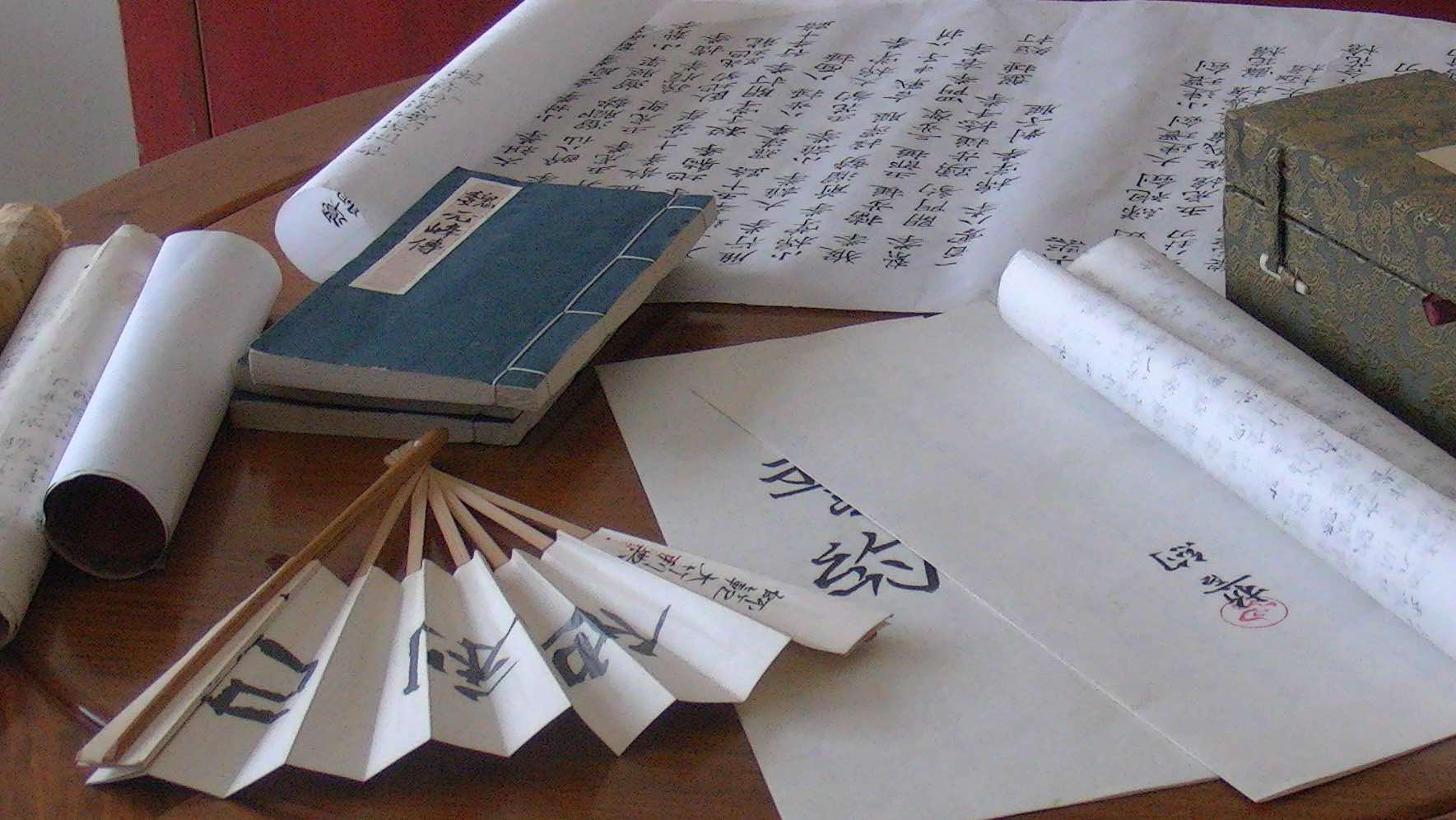
Experience and Research Sources
The following points provide a brief overview of our accumulated experience and the sources we have explored in our research and practice activities:
- Closed-Door Apprenticeship 入門弟子: We have been privileged to receive direct transmission as closed-door disciples 入門弟子 of the Warrior Heart 戦士心 tradition. During a twenty-year apprenticeship under our Master, Kwan Yuen Cheong 關潤昌, we delved into a forgotten, once-forbidden warrior art of assassins known as the Way of Ten Thousand Things 萬物之道.
- Warrior Heart Record 戦士心: These invaluable documents were passed down to us directly from Master to closed-door disciple 入門弟子. Considered ‘secret,’ they contain comprehensive information on all aspects of the art and tradition. While the surviving written record dates back to 1820, the tradition itself is much older. Unfortunately, many older materials on rice paper did not survive the tumultuous Qing 大清 Dynasty period and the subsequent move of our tradition to Southeast Asia.
- Old martial arts manuscripts: Our private collection, amassed during the late 80s, is one of the largest repositories of documents rescued from the destruction of the cultural revolution. Much of this collection has been digitised for long-term preservation.
- Military manuals: Our collection includes copies of all classic Chinese military manuals, with access to most originals through various means.
- Ancient books: We conduct research using diverse historical books and manuscripts from different cultures, often covering subjects unrelated to martial arts or military history. These unconventional sources have proven to be unexpectedly rich in relevant information.
- Museums: We have explored numerous museums to source information on weapons, weights, armour, etc. Extracting relevant, subtle information from these sources requires intelligent and innovative research methods.
- Hermits: Years of gathering information from, and studying with, the hermits and recluse community of China and Southeast Asia have provided valuable insights into their knowledge and customs.
- Fellow researchers: We collaborate with fellow researchers and academics in China, Japan, Mongolia, Korea, and Malaysia. The Mongolians, in particular, have made tantalising and unexpected discoveries.
- Masters in Japan: From 1992 to 2005, we conducted in-depth interviews with credible Japanese masters, gaining insights into their arts, traditions, and surviving documents. At times, these interviews included demonstrations and interactive discussion on their martial traditions.
- Anecdotes and notes from aging Chinese masters: Between 1996 and 2005, we interviewed and received documents from Chinese masters in Hong Kong, Singapore, Malaysia, and Indonesia, many eager to share information as their traditions faced decline.
- The Chin Woo 精武 (also called Jing Wu 精武) record: We gained access to and copied a significant portion of the Chin Woo 精武 record, a massive repository ranging from the Qing 大清 period to the present day. Although challenging to sift through, the record contains valuable information for the intrepid researcher.
- Independent Chinese collectors: We collaborate with a network of Chinese collectors, ranging from weapons enthusiasts to calligraphy buffs.
- Yakuza 極道: Immersing ourselves in the world of the Japanese Yakuza 極道, we spent several years with operational members, including one ‘boss,’ garnering invaluable experiences and knowledge on their martial traditions.
- Triads 三合會: We had a unique opportunity to enter the world of a triad group for research purposes. This two-decade-long relationship allowed us to investigate their martial arts practices and their modern use of stealth. The experience had a profound impact on us.
- Police material: Information obtained from both the Hong Kong and Thai police on triad traditions and recorded activities offered insights into the real-world application of Chinese martial arts in triad gang warfare.
- In the early 90s, we embarked on a remarkable two-year voyage retracing the path of Zhang He’s 鄭和 Ming Dynasty Fleet. Our purpose was to visit remote locations referred to as ‘junk stations,’ which had remained isolated for centuries. Everything we encountered seemed frozen in time – from the ancient language to the outdated customs. Among our discoveries were old Chinese military weapons and a myriad of interesting artifacts originating from Chinese pirates now assimilated into the local communities. Surprisingly, we realized that we were the first to thoroughly explore the Sinosphere for valuable information and evidence on Chinese warrior arts and military history.
- Computer modelling: Leveraging technological advancements, we employed data analysis and explored theories in ways unprecedented in the martial arts world. Drawing on previous career experience in algorithmic development, we applied these skills to enhance our research endeavors.” Further, the digitising and subsequent cataloging of historical documents has made a positive impact on our research work.
